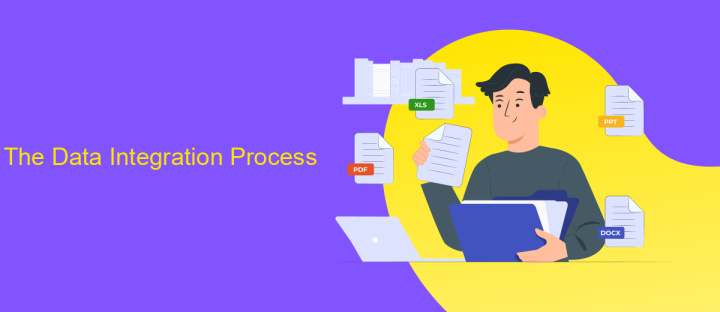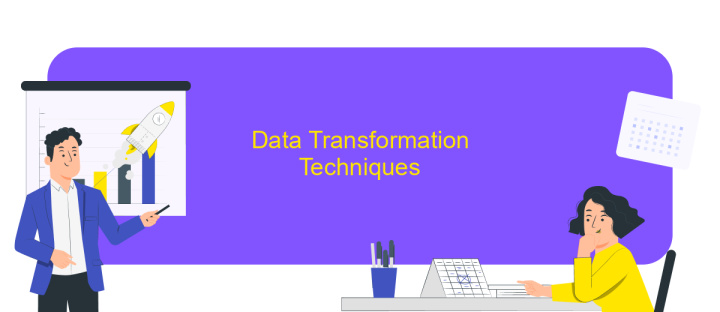What is Data Integration and Transformation
Data integration and transformation are critical processes in the realm of data management, enabling organizations to harness the full potential of their data. By seamlessly combining data from various sources and converting it into a usable format, businesses can gain valuable insights and drive informed decision-making. This article explores the fundamental concepts, techniques, and benefits of data integration and transformation in today's data-driven world.
Introduction to Data Integration and Transformation
Data integration and transformation are critical processes in the realm of data management, enabling organizations to harness the full potential of their data assets. Integration involves combining data from various sources into a unified view, while transformation involves converting data into a desired format or structure. These processes are essential for ensuring data consistency, accuracy, and accessibility across different systems and platforms. By integrating and transforming data, businesses can gain valuable insights, streamline operations, and make informed decisions.
- Data integration involves merging data from diverse sources.
- Data transformation converts data into usable formats.
- Ensures data consistency and accuracy.
- Facilitates better decision-making and insights.
Implementing effective data integration and transformation strategies can significantly enhance an organization's ability to leverage data for competitive advantage. With the growing volume and complexity of data, these processes are becoming increasingly important. They enable seamless data flow across applications, reduce redundancy, and improve data quality. As a result, businesses can respond more quickly to market changes, optimize processes, and deliver enhanced customer experiences. In a data-driven world, mastering data integration and transformation is vital for sustained success.
The Data Integration Process

Data integration is a crucial process that involves combining data from different sources to provide a unified view. This process typically begins with identifying the data sources, which may include databases, cloud services, and other data repositories. Once identified, data extraction occurs, where relevant data is gathered and prepared for integration. The extracted data then undergoes a transformation process to ensure consistency, quality, and compatibility across different data sets. This step often involves data cleansing, normalization, and enrichment to align with the desired format and standards.
After transformation, the data is loaded into a target system, such as a data warehouse, where it becomes accessible for analysis and reporting. Tools like ApiX-Drive can significantly simplify this process by providing automated workflows and integrations, allowing seamless data transfer between various platforms. By using such services, organizations can reduce the complexity and time involved in manual integration, ensuring that data is always up-to-date and readily available for decision-making. Ultimately, effective data integration enables businesses to derive actionable insights and drive strategic initiatives.
Data Transformation Techniques

Data transformation is a crucial step in preparing data for analysis, ensuring that information is consistent, accurate, and ready for use. This process involves converting data from one format or structure into another, enabling seamless integration and analysis. Effective data transformation enhances data quality and facilitates better decision-making.
- Normalization: This technique involves scaling data to a standard range, often between 0 and 1, to ensure uniformity across datasets.
- Aggregation: Summarizing data by grouping it into categories, allowing for more manageable and insightful analysis.
- Data Cleansing: Removing or correcting errors, duplicates, and inconsistencies to improve data quality and reliability.
- Encoding: Converting categorical data into numerical format, making it suitable for machine learning algorithms.
- Pivoting: Restructuring data tables to provide different perspectives, enhancing the ability to analyze relationships.
Implementing these data transformation techniques ensures that datasets are optimized for analysis, reducing complexity and improving accuracy. By transforming data effectively, organizations can leverage insights to drive strategic initiatives and achieve competitive advantages. Ultimately, these techniques play a pivotal role in the data lifecycle, facilitating seamless data integration and enhancing overall data utility.
Benefits of Data Integration and Transformation

Data integration and transformation are essential processes in modern data management, allowing organizations to streamline their data from various sources into a unified view. This not only enhances data accessibility but also improves decision-making by providing comprehensive insights. By integrating data, businesses can break down silos and foster collaboration across departments, leading to more cohesive strategies and operations.
Moreover, data transformation ensures that the integrated data is in a consistent and usable format, which is crucial for accurate analysis. This process involves cleansing, enriching, and structuring data, making it ready for advanced analytics and reporting. As a result, companies can derive more value from their data assets, leading to better business outcomes.
- Improved data quality and consistency
- Enhanced decision-making capabilities
- Increased operational efficiency
- Facilitated compliance and risk management
In conclusion, the benefits of data integration and transformation are manifold, empowering organizations to harness the full potential of their data. By ensuring that data is both integrated and transformed effectively, businesses can achieve greater agility, innovation, and competitive advantage in the ever-evolving digital landscape.


Data Integration and Transformation Tools and Technologies
Data integration and transformation tools and technologies play a crucial role in managing and optimizing the flow of information across various systems. These tools facilitate the seamless merging of data from disparate sources, enabling organizations to achieve a unified view of their data landscape. Technologies such as ETL (Extract, Transform, Load) are commonly used to extract data from different databases, transform it into a suitable format, and load it into a target system. This process ensures data consistency and quality, which are essential for accurate analysis and decision-making.
In addition to traditional ETL tools, modern cloud-based solutions like ApiX-Drive have emerged, offering flexible and automated data integration capabilities. ApiX-Drive allows users to connect multiple applications without requiring extensive coding knowledge, streamlining the integration process. This service is particularly beneficial for businesses looking to automate data workflows and reduce manual intervention. By leveraging such tools, organizations can enhance their data integration strategies, ensuring real-time data availability and improving operational efficiency.
FAQ
What is data integration?
Why is data transformation important in data integration?
What are common challenges in data integration and transformation?
How can automation help in data integration and transformation?
What are the benefits of effective data integration and transformation?
Apix-Drive is a simple and efficient system connector that will help you automate routine tasks and optimize business processes. You can save time and money, direct these resources to more important purposes. Test ApiX-Drive and make sure that this tool will relieve your employees and after 5 minutes of settings your business will start working faster.

